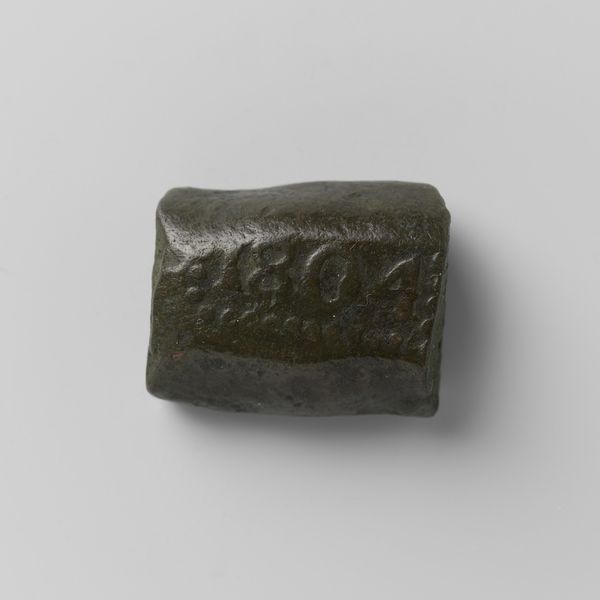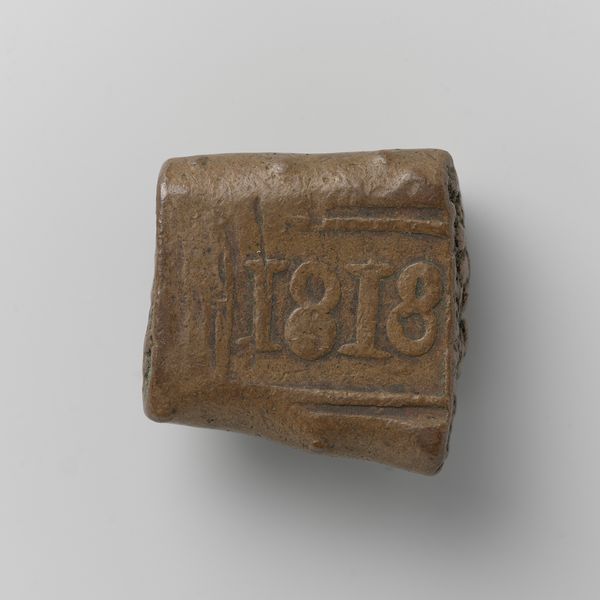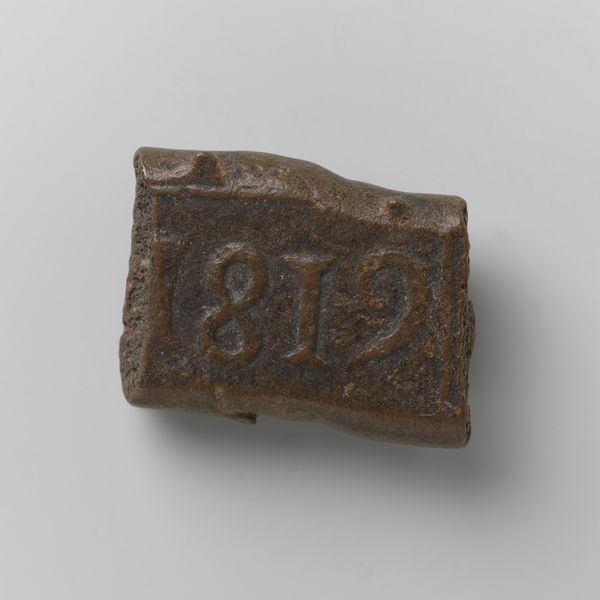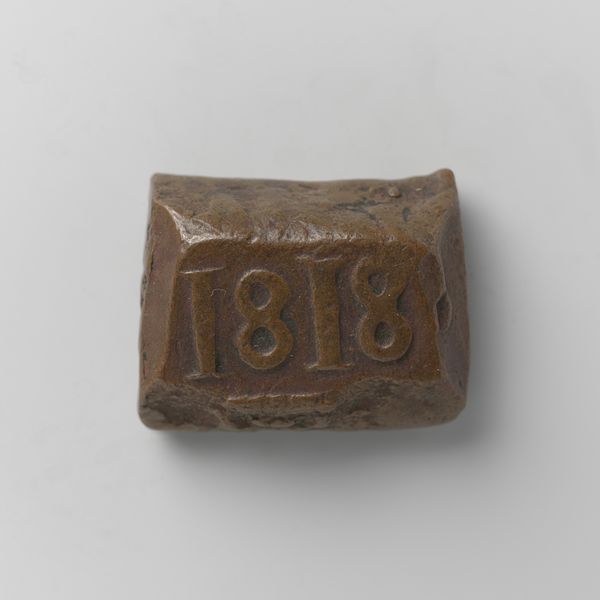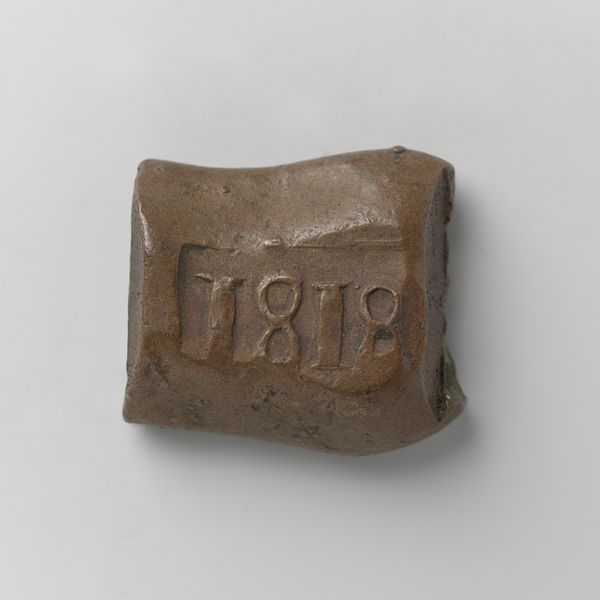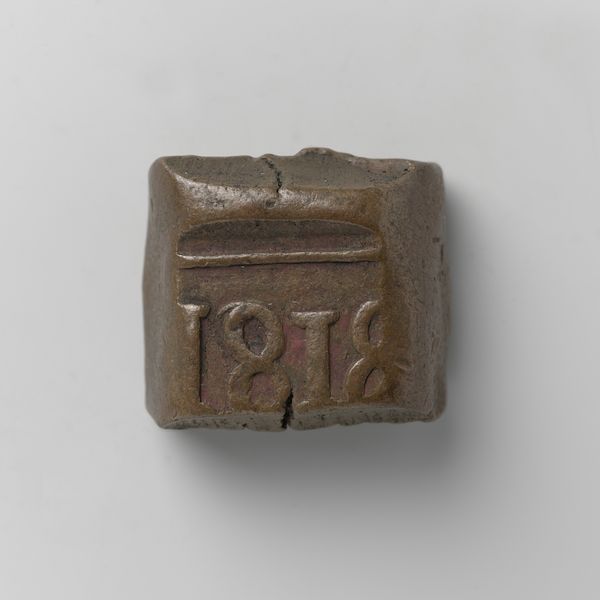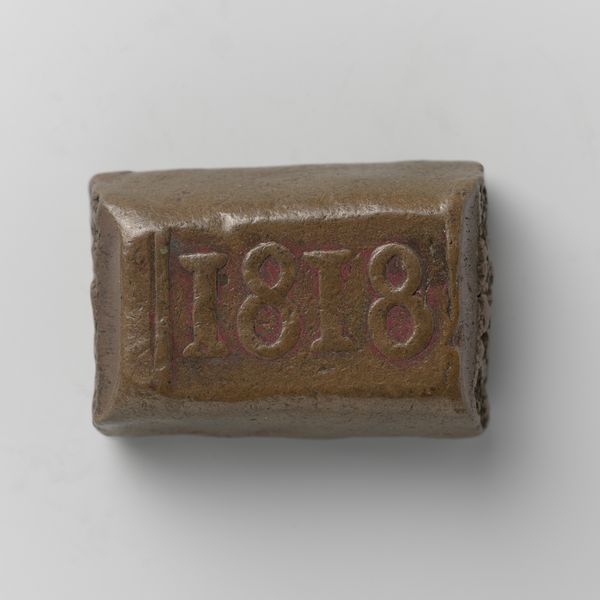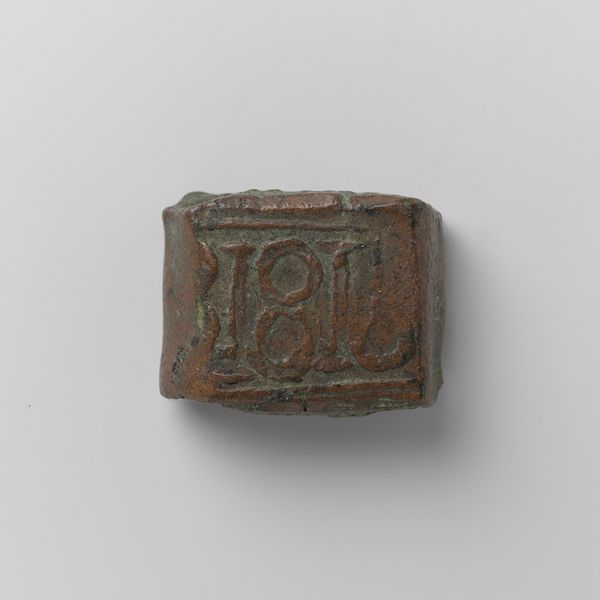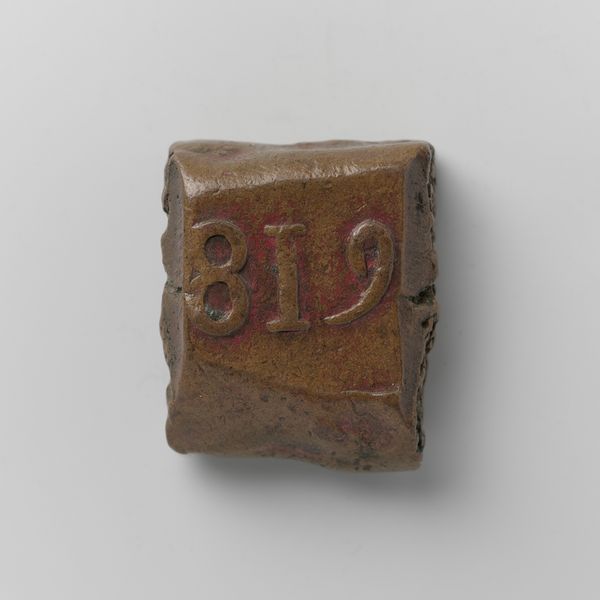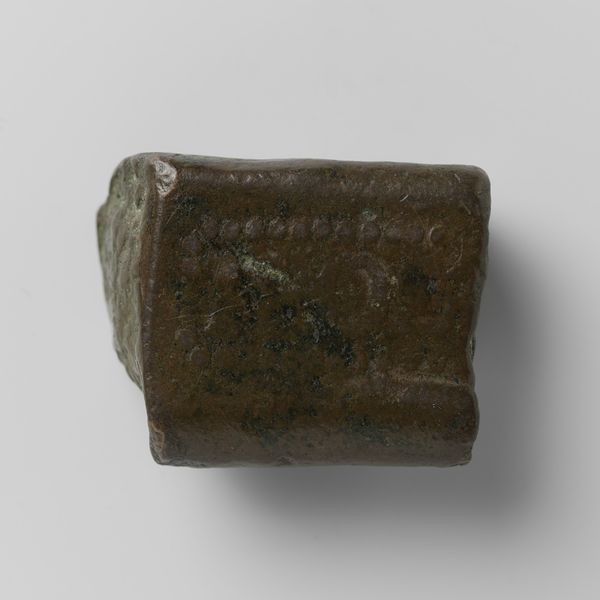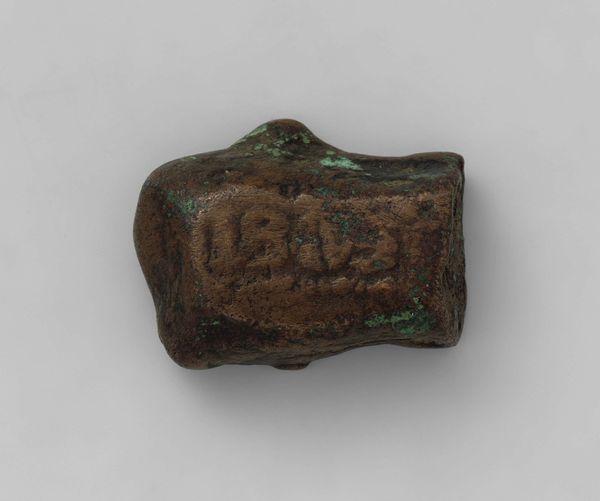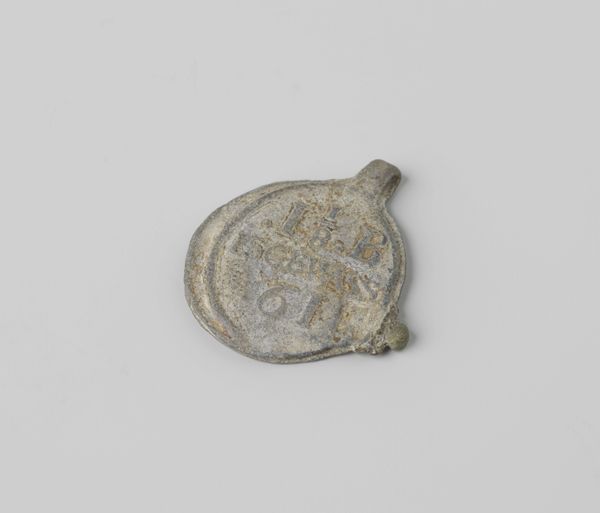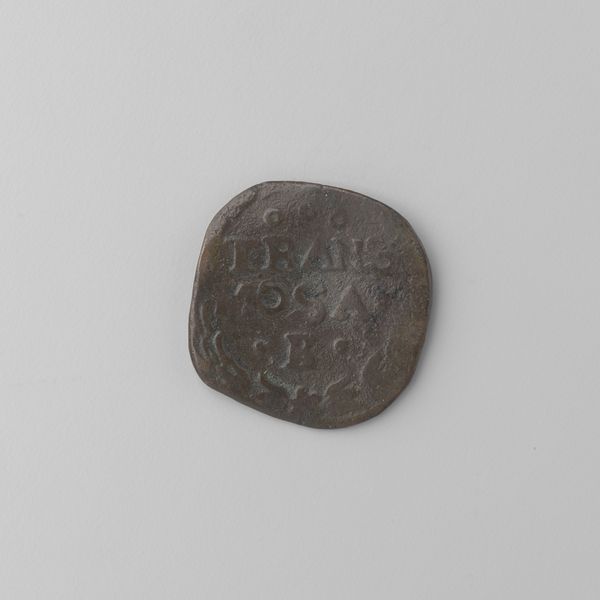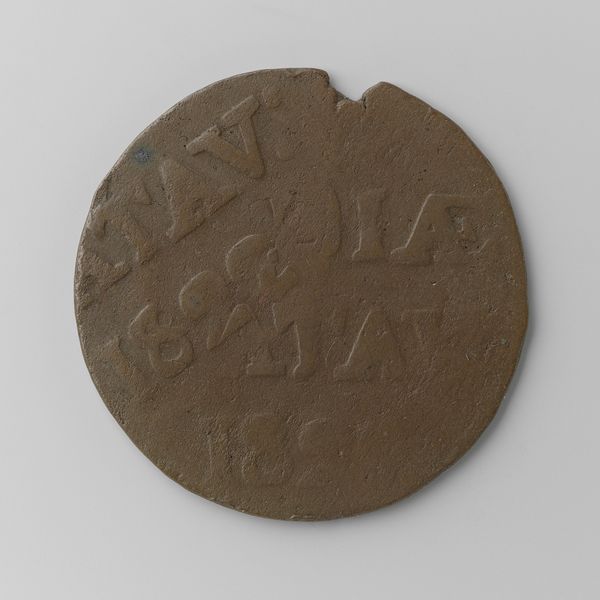
metal, sculpture
#
metal
#
ancient-mediterranean
#
sculpture
#
islamic-art
Dimensions: length 2.1 cm, width 1.5 cm, thickness 0.7 cm, weight 20.97 gr
Copyright: Rijks Museum: Open Domain
This copper ‘Bonk van 1 stuiver’ was produced in 1803 in the Dutch East Indies, now Indonesia. It isn't exactly beautiful, is it? More like a battered chocolate than a coin. Its irregular shape and rough texture are a direct result of the manufacturing process. Rather than being neatly stamped from a precisely-cut die, as with most European coinage at the time, these were individually cast. Molten copper was poured into rough molds. This method was far less refined and efficient. The term ‘Bonk,’ meaning ‘lump,’ reflects its crude production. The raised dots and the year are visible, but the casting process results in a unique, somewhat misshapen form each time. The weight of just under 21 grams gives it a certain heft. The Bonk represents a stark contrast between industrializing Europe and its colonial possessions. It reminds us that even something as simple as a coin can carry a heavy history of labor, value, and unequal power relations. It prompts us to look beyond aesthetics and consider the social context embedded in its very substance.
Comments
No comments
Be the first to comment and join the conversation on the ultimate creative platform.
